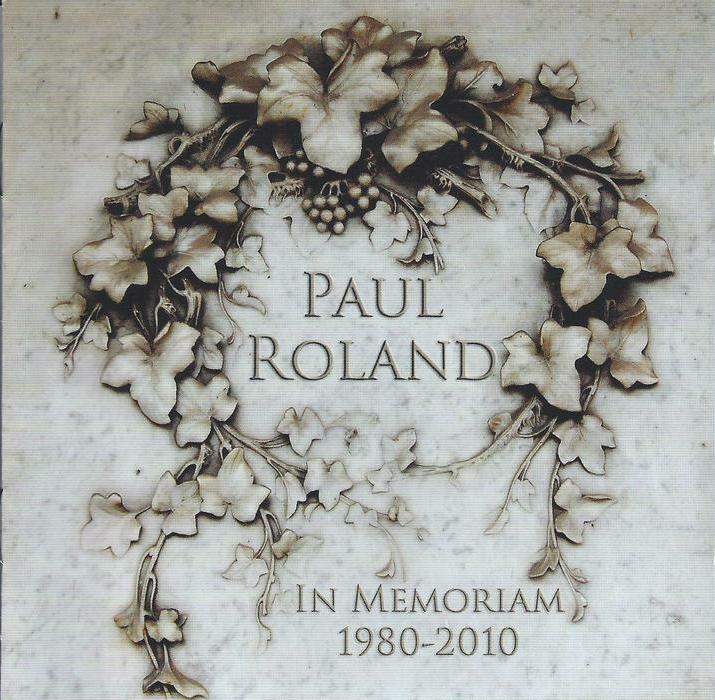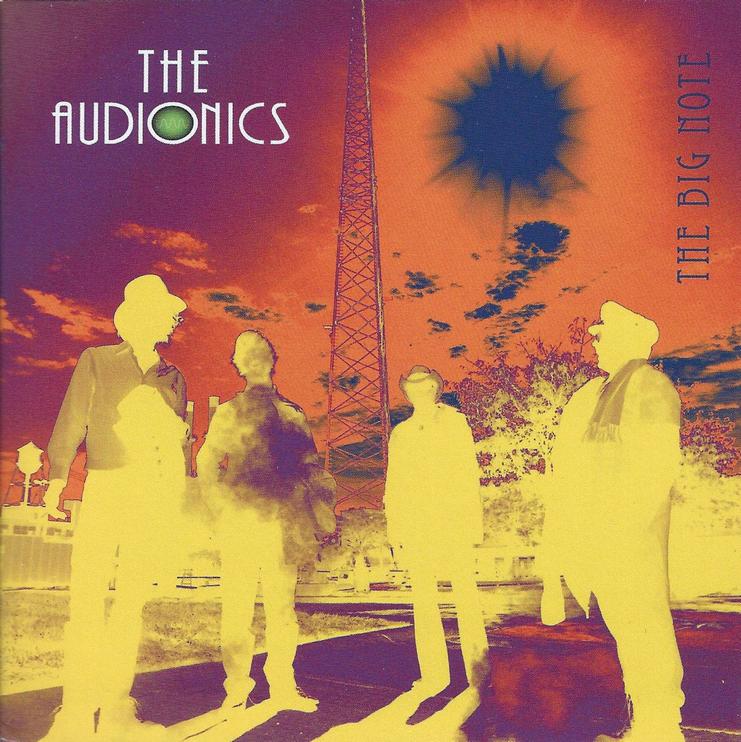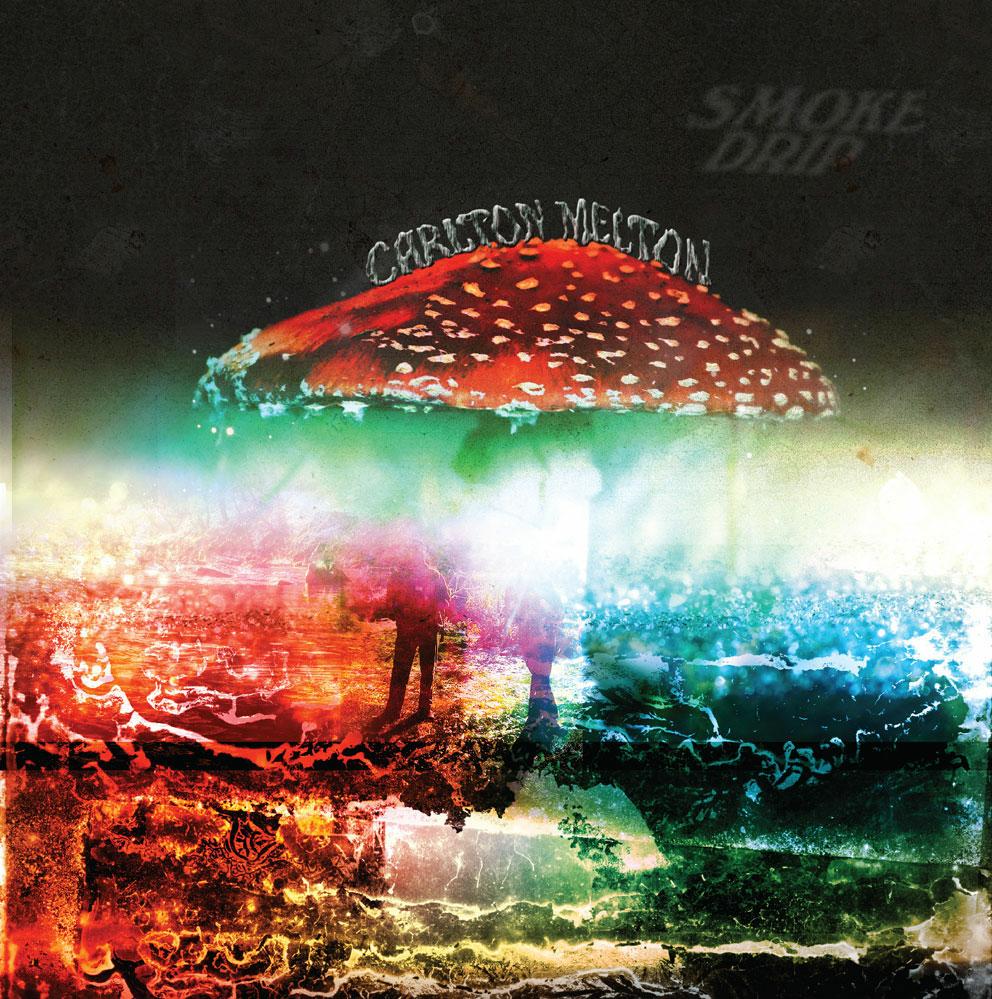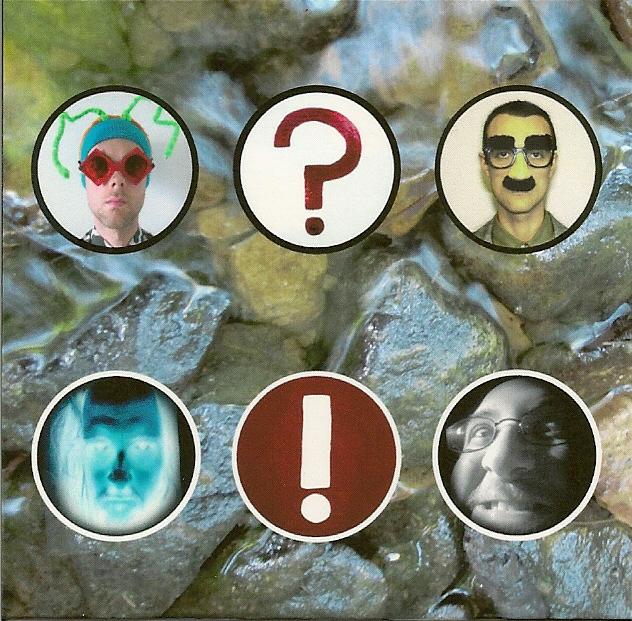 British singer, song-writer, musician and author Paul Roland has released over 15 albums since 1980, covering a range of Psychedelic-Pop, Gothic-Psych-Baroque, Gothic-Prog, Prog-Psych, Dark-Folk, and every imaginable cross-section of these styles. I’ve heard scatterings of Paul’s music over the years but the 2-CD compilation, In Memoriam: 1980-2010, is my first immersion into what his music is about.
British singer, song-writer, musician and author Paul Roland has released over 15 albums since 1980, covering a range of Psychedelic-Pop, Gothic-Psych-Baroque, Gothic-Prog, Prog-Psych, Dark-Folk, and every imaginable cross-section of these styles. I’ve heard scatterings of Paul’s music over the years but the 2-CD compilation, In Memoriam: 1980-2010, is my first immersion into what his music is about.
He’s a pretty fascinating guy, as I learned from reading the many interviews at paulroland.de. Paul’s first real captivation with music came after discovering Marc Bolan, and was even managed by Marc’s widow June Bolan in the early 80s. Paul was also a music journalist in the 80s, writing articles, reviews and interviews for Kerrang and other UK music and film publications. I got a kick out of the sizable list of subjects Paul interviewed, which included a range of artists including Lemmy, John Lee Hooker, The Velvet Undergound, Slade, Yo Yo Ma, and… get this… Hammer horror icon Peter Cushing! Pretty cool, huh? Paul has also written many non-fiction books on such topics as reincarnation, angels, ghosts, meditation, the Nuremburg trials, murderers, a Marc Bolan biography, and more.
Paul has divided the In Memoriam compilation into two parts. The first CD consists of 17 full band songs. Among the highlights is Blades Of Battenburg, a powerful Prog infused rocker with a symphonic edge. I love the eerie wailing keyboard on the simultaneously dreamy and whimsical The Puppet Master. The acoustic Goth-Prog Requiem is a standout, with its beautiful flute and violin passages. Dr Strange, Gabrielle, and Nosferatu all bring to mind Power-Pop for Goths. High intensity organs are common on many of these songs. As you might expect from the title, In The Opium Den is a mind-bending, atmospheric tune, and just as much of an excursion as it is a structured song. Dig that trippy sitar. Paul invites us to “take a magic carpet ride” and “join my desert caravan” on A Thousand And One Nights, another standout song, being a cool grooving psych rocker that’s nicely acidic and even a little Celtic. Ditto for Cthullu, with its orchestral melloton-ish keys and winding psych guitar trading licks with violin. We’re also treated to plenty of chunky kick-ass ROCK on songs like Witchfinder General, Aleistair Crowley, Gargoyles, and Come To The Sabbat, the latter of which veers off into a killer dueling percussion and violin segment.
The second CD has 19 songs which Paul describes as the baroque chamber pop and Edwardian folk tracks. I like that description, and to my ears the songs fall roughly into two general categories. We have acoustic Pop-Psych with orchestral embellishments and a 60s vibe. Standout tracks that I’ll mention include the beautiful Great Edwardian Air-Raid. Alice’s House stands among the best of 60s orchestrated Pop-Psych, and especially resonated with me as I recently finished reading Lewis Carroll’s Alice stories for the upteenth time. Ditto for the heavily orchestrated folk based Poets And The Painters. And Captain Nemo is a stunningly beautiful song, being a spaced out Prog-Pop-Psych journey to dreamland.
Then we’ve got several Folk-Psych songs with gently flowing strings, flutes, and keys. Lon Chaney, Wyndham Hill, The Ratcatcher’s Daughter, and Moriarty all grabbed me on the first listen. The horn melody on Journey To The Pole brought to mind the old Alfred Hitchcock Presents TV theme run through a Renaissance Fair grinder. Lots happening on this 4 minute song. The Sea Captain is a somber song that conjures up powerful images of the crusty old captain telling his tale. The strings on this song will bring tears to your eyes. Dice With The Devil is an upbeat song that’s far more rocking than most of the tracks on disc 2, but one that I envisioned being sung by the same sea captain of the earlier track. Voodoo Doll has a cool beat, yet is dreamily drifting and even a wee bit sultry. And Abramelin is another stunning beauty, with heavenly keys and choral vocals.
Paul is an excellent songwriter and lyricist and has a somewhat unique voice; the only analogy I can think of is Edward Ka-Spel of the Legendary Pink Dots. And while he is singing, he has a sort of narrative delivery style on a lot of the songs that I like and helps give him his own distinctive character. The production is outstanding, with top notch musicians, and music that is complex yet thoroughly accessible. Guest musicians that have contributed to Paul’s albums include Robyn Hitchcock, Bevis Frond, Nick Nicely, Knox of the Vibrators and Andy Ellison (of John’s Children), and I’ll say that Hitchcock and Nicely fans are sure to enjoy Paul’s music. Oh, and I should emphasize that despite the In Memoriam title and the wreath on the cover, Paul is very much alive and has released two new albums since this compilation came out in 2010.
In Memoriam and other Paul Roland albums are available at Amazon and CDBaby.com, with CDbaby being a good source for digital downloads.
Lots of information about Paul Roland and his music can be found at: http://www.paulroland.de
Information about Paul Roland the author can be found at: http://www.paulroland.net
Paul’s back catalog has been reissued by the German label Syborg Music: http://www.syborgmusic.de
Reviewed by Jerry Kranitz
 San Diego alt-rockers Machines Learning, comprised of guitarist/vocalist Paul Williams Balmer, bassist Bradley Botbyl and drummer Mario Quintero, have released a 26-minute EP’s worth of material recorded in a three month period at the start of 2012. Alternately noisy, droney and trippy, the album recalls some of the classic guitar-based rock that was coming from both sides of the Atlantic in the early ’90’s. For example, opening track Bulletproof Tiger practically screams My Bloody Valentine at you, with excellent droning and distorted waves of shoegaze guitar, over a militant 4/4 beat and across some elegantly wasted vocals. The briefest of pauses in the middle quickly gives way to a menacing wall of sound pushing the listener remorselessly into Punching The Rabbit. This opens with some very fuzzed out bass from Bradley Botbyl, bringing to mind Ash’s noisier moments, and some crytic lyrics; what the words mean is a definite second to how they sound. The somewhat more sparse Pendragon’s Lullaby recalls The Smashing Pumpkins’ Mellon Collie And The Infinite Sadness album that was playing at evey student party back in 1995. satAMcoffee opens with droning feedback and slower tempo, grinding you implacably down over its four minute length, while 010710 has a lighter touch with very melodic bass and melancholic lyrics to match. Closing track, This Destroyed Me, dispenses entirely with vocals, rocking on in woozy fashion for about five minutes with grinding guitars and an almost post-rock sound, that descends into a white noise coda. Fans of that era of classic “downer” rock should check out the raw guitar noises, droning feedback and powerful rhythmns contained within this excellent debut release.
San Diego alt-rockers Machines Learning, comprised of guitarist/vocalist Paul Williams Balmer, bassist Bradley Botbyl and drummer Mario Quintero, have released a 26-minute EP’s worth of material recorded in a three month period at the start of 2012. Alternately noisy, droney and trippy, the album recalls some of the classic guitar-based rock that was coming from both sides of the Atlantic in the early ’90’s. For example, opening track Bulletproof Tiger practically screams My Bloody Valentine at you, with excellent droning and distorted waves of shoegaze guitar, over a militant 4/4 beat and across some elegantly wasted vocals. The briefest of pauses in the middle quickly gives way to a menacing wall of sound pushing the listener remorselessly into Punching The Rabbit. This opens with some very fuzzed out bass from Bradley Botbyl, bringing to mind Ash’s noisier moments, and some crytic lyrics; what the words mean is a definite second to how they sound. The somewhat more sparse Pendragon’s Lullaby recalls The Smashing Pumpkins’ Mellon Collie And The Infinite Sadness album that was playing at evey student party back in 1995. satAMcoffee opens with droning feedback and slower tempo, grinding you implacably down over its four minute length, while 010710 has a lighter touch with very melodic bass and melancholic lyrics to match. Closing track, This Destroyed Me, dispenses entirely with vocals, rocking on in woozy fashion for about five minutes with grinding guitars and an almost post-rock sound, that descends into a white noise coda. Fans of that era of classic “downer” rock should check out the raw guitar noises, droning feedback and powerful rhythmns contained within this excellent debut release.
 The Big Note is the debut release from Michigan based Audionics (which means “the science of audible electricity”). The band are the quartet of Leo Gillis II on vocals, Sheldon Santamaria on saxophone, Djeto Juncaj on guitar and santoor (an Indian hammered dulcimer), and Kerry Gluckman on drums and percussion. I’ll get Aural Innovations readers attention by mentioning that Gluckman was in THTX, though The Audionics are far and away from the space rock that THTX played.
The Big Note is the debut release from Michigan based Audionics (which means “the science of audible electricity”). The band are the quartet of Leo Gillis II on vocals, Sheldon Santamaria on saxophone, Djeto Juncaj on guitar and santoor (an Indian hammered dulcimer), and Kerry Gluckman on drums and percussion. I’ll get Aural Innovations readers attention by mentioning that Gluckman was in THTX, though The Audionics are far and away from the space rock that THTX played. Carlton Melton – “Smoke Drip” 12″
Carlton Melton – “Smoke Drip” 12″ Carlton Melton – “Photos of Photos”
Carlton Melton – “Photos of Photos” Sunwolf are a post rock band, of sorts, comprising a drummer and guitarist. The band hail from Leeds in West Yorkshire which has, in previous times, given us the brooding goth of The Sisters of Mercy, the uncompromisingly grinding funk of Gang of Four and those great bastions of unreconstructed lad culture; The Kaiser Chiefs. I say that Sunwolf are a post rock band of sorts because they also cite their music as being ambient, progressive and stoner. I would probably categorise their music as originating in the same camp as Neil Young’s Dead Man soundtrack; a special kind of selfless guitar music that worships and renounces rock and roll in a single sweeping gesture.
Sunwolf are a post rock band, of sorts, comprising a drummer and guitarist. The band hail from Leeds in West Yorkshire which has, in previous times, given us the brooding goth of The Sisters of Mercy, the uncompromisingly grinding funk of Gang of Four and those great bastions of unreconstructed lad culture; The Kaiser Chiefs. I say that Sunwolf are a post rock band of sorts because they also cite their music as being ambient, progressive and stoner. I would probably categorise their music as originating in the same camp as Neil Young’s Dead Man soundtrack; a special kind of selfless guitar music that worships and renounces rock and roll in a single sweeping gesture. Herd of Instinct’s 2011 debut was a fiery set that covered a range of styles, from complex instrumental progressive rock that recalled both Discipline and Red-era King Crimson, ambience and soundscapes, gothic prog and dark, doomy ragas. On the first album the band were the core trio of Mark Cook on Warr guitar, guitar, and fretless bass, Mike Davison on guitars, and Jason Spradlin on drums, plus a variety of guests on various tracks, including veteran drummers Jerry Marotta, Gavin Harrison, and Pat Mastelotto, and Djam Karet’s Gayle Ellett on guitar and Mellotron (both albums are released on Djam Karet’s Firepool label). The first thing that jumped out at me reading the credits for the band’s sophomore effort – Conjure – is that Gayle Ellett is now listed as a fourth member, playing Moog, Mellotron, Hammond organ, Rhodes and dilruba (which I think is something of a cross between a harp and sitar).
Herd of Instinct’s 2011 debut was a fiery set that covered a range of styles, from complex instrumental progressive rock that recalled both Discipline and Red-era King Crimson, ambience and soundscapes, gothic prog and dark, doomy ragas. On the first album the band were the core trio of Mark Cook on Warr guitar, guitar, and fretless bass, Mike Davison on guitars, and Jason Spradlin on drums, plus a variety of guests on various tracks, including veteran drummers Jerry Marotta, Gavin Harrison, and Pat Mastelotto, and Djam Karet’s Gayle Ellett on guitar and Mellotron (both albums are released on Djam Karet’s Firepool label). The first thing that jumped out at me reading the credits for the band’s sophomore effort – Conjure – is that Gayle Ellett is now listed as a fourth member, playing Moog, Mellotron, Hammond organ, Rhodes and dilruba (which I think is something of a cross between a harp and sitar). British singer, song-writer, musician and author Paul Roland has released over 15 albums since 1980, covering a range of Psychedelic-Pop, Gothic-Psych-Baroque, Gothic-Prog, Prog-Psych, Dark-Folk, and every imaginable cross-section of these styles. I’ve heard scatterings of Paul’s music over the years but the 2-CD compilation, In Memoriam: 1980-2010, is my first immersion into what his music is about.
British singer, song-writer, musician and author Paul Roland has released over 15 albums since 1980, covering a range of Psychedelic-Pop, Gothic-Psych-Baroque, Gothic-Prog, Prog-Psych, Dark-Folk, and every imaginable cross-section of these styles. I’ve heard scatterings of Paul’s music over the years but the 2-CD compilation, In Memoriam: 1980-2010, is my first immersion into what his music is about. A British band whose career was launched while based in Germany, Nektar released 7 studio albums between 1971-1977, the first 6 of which included the “classic” lineup of Roye Albrighton on guitar and vocals, Allan “Taff” Freeman on keyboards, Derek “Mo” Moore on bass, and Ron Howden on drums. I love these albums, which can vary considerably from one to the next, while retaining a distinct Nektar flavor, and are among the 70s albums I revisit most often. The band would pop up again in the early 80s and have been active again since around 2000, though the 70s albums are, in my opinion, the true classics. Cleopatra Records’ Purple Pyramid subdivision has reissued the first Nektar album – Journey To The Centre Of The Eye – in a 2-CD edition that features the original album remastered, and a 1971 live performance of the entire album.
A British band whose career was launched while based in Germany, Nektar released 7 studio albums between 1971-1977, the first 6 of which included the “classic” lineup of Roye Albrighton on guitar and vocals, Allan “Taff” Freeman on keyboards, Derek “Mo” Moore on bass, and Ron Howden on drums. I love these albums, which can vary considerably from one to the next, while retaining a distinct Nektar flavor, and are among the 70s albums I revisit most often. The band would pop up again in the early 80s and have been active again since around 2000, though the 70s albums are, in my opinion, the true classics. Cleopatra Records’ Purple Pyramid subdivision has reissued the first Nektar album – Journey To The Centre Of The Eye – in a 2-CD edition that features the original album remastered, and a 1971 live performance of the entire album. The blistering power-trio rock sounds of The Space Sharks is a surprisingly fresh mix of Classic Rock and 60’s garage psychedelia with just a tad of tripped out guitary Spacerock in the mix. The band was formed in Baltimore, MD, in 2009, by Lonnie Richards on lead vocals and guitar, Mike Martino on drums, percussion and backing vocals, Bob Bergerson on bass as well as Brian Harrigan on additional backing vocals. On the info promo-sheet the band says they recorded all the songs on first or second take, so not to over work or over produce their sound. It works! The sound is fresh, loud, blistering sunshine acid melody with swirling psychedelic guitars and occasional flute. This self titled, self released, debut CD has 9 songs, the short album clocking in at just about 33 minutes. It is very energetic and melodic sounding, bursting with spontaneity, this is some feelgood summer music I really enjoyed on the very first spin. It’s accessible like Classic Rock and 60’s garage sounds, with some Floydian spacey moments, with acid guitars and phased vocals. The highlight tracks for me are the opener, Run For Cover, as well as Satellites, Apocalypse” and Spinning ‘Round. The album was written, produced and recorded on their own home-equipment, and its beefy and well crafted stuff for those with a sense of psychedelic simplicity, good melody and peaced-out optimism. A highly recommended purchase for all 60’s fans out there who want song based spacyness and acid rock that does not sound dated at all, but refreshing like a cold 7Up on a hot and humid day in July, maybe, after spending hours of a stoned day at the beach gazing at the ocean, just taking in the free time. It was released in 2011. I for one enjoyed the magic feelgood sunshine acid sounds of The Space Sharks, and their far out galactic spacerocking scene of mystical seekers, and we here at AI welcome them aboard our… ‘zine!
The blistering power-trio rock sounds of The Space Sharks is a surprisingly fresh mix of Classic Rock and 60’s garage psychedelia with just a tad of tripped out guitary Spacerock in the mix. The band was formed in Baltimore, MD, in 2009, by Lonnie Richards on lead vocals and guitar, Mike Martino on drums, percussion and backing vocals, Bob Bergerson on bass as well as Brian Harrigan on additional backing vocals. On the info promo-sheet the band says they recorded all the songs on first or second take, so not to over work or over produce their sound. It works! The sound is fresh, loud, blistering sunshine acid melody with swirling psychedelic guitars and occasional flute. This self titled, self released, debut CD has 9 songs, the short album clocking in at just about 33 minutes. It is very energetic and melodic sounding, bursting with spontaneity, this is some feelgood summer music I really enjoyed on the very first spin. It’s accessible like Classic Rock and 60’s garage sounds, with some Floydian spacey moments, with acid guitars and phased vocals. The highlight tracks for me are the opener, Run For Cover, as well as Satellites, Apocalypse” and Spinning ‘Round. The album was written, produced and recorded on their own home-equipment, and its beefy and well crafted stuff for those with a sense of psychedelic simplicity, good melody and peaced-out optimism. A highly recommended purchase for all 60’s fans out there who want song based spacyness and acid rock that does not sound dated at all, but refreshing like a cold 7Up on a hot and humid day in July, maybe, after spending hours of a stoned day at the beach gazing at the ocean, just taking in the free time. It was released in 2011. I for one enjoyed the magic feelgood sunshine acid sounds of The Space Sharks, and their far out galactic spacerocking scene of mystical seekers, and we here at AI welcome them aboard our… ‘zine! Dog Hallucination have here a 23 minute 3″ CD that is an experimental and abstract enigma of industrial / ambient / noise / glitch experimental-ness mapped over 4 tracks. It reminds me a little of German noise-artist Siemers (who also puts out 3″ CD-R weirdness), and Norwegian group Ulver around their ambient period like the Teachings In Silence CD about a decade ago. It is subtly noisy with a subdued psychedelic guitar droned ambience, indeed. The main part of the music is distorted guitar textures and digital beats and washes of atonal white noise. Dog Hallucination consists of Bob on keyboards, sampler, engineering, percussion, manipulations, field recordings, first stage mixing, and self portraits (I can assume the pics of the weird guys on the cover art), while D. Petri is responsible for editing, mixing, photography, design, manipulation and guitars. Doggy P. Lips is the person responsible for guitars and ideas. It was recorded 2006-2007 on digital 8 and 16 track, portable minidisc and 4 track cassette, edited and mixed August 2011. I can only assume this ensemble have hallucinated themselves to beyond description or human abstraction, like bits of synaptic fallout from Savage Republic’s noisy guitar-echoes of ancient cultures and motorik kraut-distortion as interpreted by electro-ambient-glitch-era Ulver, and mixed and assembled by the found industrial machine like noise-architecture of Siemers, maybe. Either way, file this Dog Hallucination EP under “weird”.
Dog Hallucination have here a 23 minute 3″ CD that is an experimental and abstract enigma of industrial / ambient / noise / glitch experimental-ness mapped over 4 tracks. It reminds me a little of German noise-artist Siemers (who also puts out 3″ CD-R weirdness), and Norwegian group Ulver around their ambient period like the Teachings In Silence CD about a decade ago. It is subtly noisy with a subdued psychedelic guitar droned ambience, indeed. The main part of the music is distorted guitar textures and digital beats and washes of atonal white noise. Dog Hallucination consists of Bob on keyboards, sampler, engineering, percussion, manipulations, field recordings, first stage mixing, and self portraits (I can assume the pics of the weird guys on the cover art), while D. Petri is responsible for editing, mixing, photography, design, manipulation and guitars. Doggy P. Lips is the person responsible for guitars and ideas. It was recorded 2006-2007 on digital 8 and 16 track, portable minidisc and 4 track cassette, edited and mixed August 2011. I can only assume this ensemble have hallucinated themselves to beyond description or human abstraction, like bits of synaptic fallout from Savage Republic’s noisy guitar-echoes of ancient cultures and motorik kraut-distortion as interpreted by electro-ambient-glitch-era Ulver, and mixed and assembled by the found industrial machine like noise-architecture of Siemers, maybe. Either way, file this Dog Hallucination EP under “weird”.